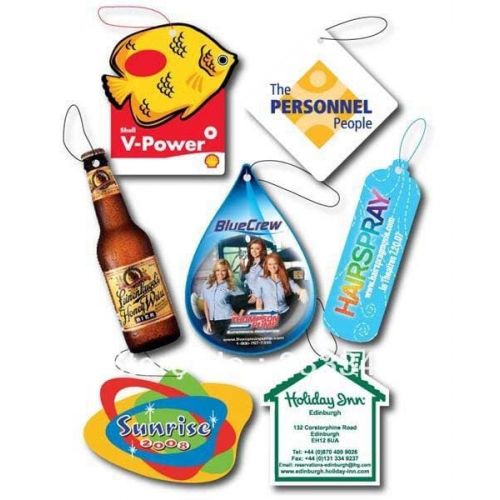Car Tire Brands To Avoid: A Comprehensive Guide to Safe and Smart Tire Choices
Car Tire Brands To Avoid: A Comprehensive Guide to Safe and Smart Tire Choices cars.truckstrend.com
Tires are arguably the most critical safety component on any vehicle. They are the sole point of contact between your car and the road, dictating everything from braking distance and handling to fuel efficiency and ride comfort. While the allure of a low price tag can be tempting, choosing the wrong tire brand or quality can have severe consequences, compromising not only your vehicle’s performance but, more importantly, your safety and the safety of your passengers.
This comprehensive guide delves into the crucial topic of "Car Tire Brands To Avoid," not by singling out specific brands for blanket condemnation, but by equipping you with the knowledge to identify characteristics, red flags, and types of tires that pose significant risks. Our aim is to empower you to make informed decisions, prioritizing safety, reliability, and long-term value over short-term savings.
Car Tire Brands To Avoid: A Comprehensive Guide to Safe and Smart Tire Choices
The Hidden Dangers of Poor-Quality Tires
Opting for ultra-budget or unknown tire brands often comes with a host of hidden dangers and significant drawbacks that far outweigh any initial cost savings. Understanding these risks is the first step in making smarter tire choices.
1. Compromised Safety: The Ultimate Risk
Poor-quality tires are a direct threat to safety. They often exhibit:
- Extended Braking Distances: Especially in wet conditions, inferior rubber compounds and tread designs struggle to maintain grip, leading to significantly longer stopping distances, increasing the risk of collisions.
- Reduced Handling and Stability: Vague steering, unpredictable cornering, and poor stability, particularly at highway speeds or during emergency maneuvers, are common issues.
- Increased Risk of Blowouts: Substandard materials and manufacturing processes can lead to structural weaknesses, making tires more susceptible to punctures, sidewall failures, and catastrophic blowouts, especially under stress or heat.
- Poor Hydroplaning Resistance: Inadequate tread patterns struggle to disperse water, causing the tire to lose contact with the road, leading to a complete loss of control in rainy conditions.

2. Performance Degradation: Beyond Safety
Even if a catastrophic failure doesn’t occur, poor tires degrade your driving experience:
- Excessive Road Noise and Vibration: Cheap tires often lack the advanced noise-reducing technologies and precise manufacturing of quality brands, leading to a loud and uncomfortable ride.
- Diminished Ride Comfort: Stiffer sidewalls or poor internal construction can result in a harsh, bumpy ride, transmitting more road imperfections into the cabin.
- Subpar Grip in Varied Conditions: Whether it’s dry asphalt, wet roads, or light snow, low-quality tires simply cannot match the consistent grip and adaptability of well-engineered alternatives.

3. Economic Pitfalls: The Illusion of Savings

The initial savings quickly evaporate when you consider the long-term costs:
- Premature Wear and Shorter Lifespan: Inferior rubber compounds wear down much faster and often unevenly, requiring more frequent replacements. This negates any initial savings.
- Reduced Fuel Efficiency: Higher rolling resistance due to poor design and materials means your engine has to work harder, leading to increased fuel consumption and higher operating costs.
- Warranty Woes and Replacement Hassles: Many ultra-budget brands offer limited or non-existent warranties, making it difficult or impossible to get recourse if tires fail prematurely. You might end up buying multiple sets of cheap tires for the price of one quality set.
4. Lack of Reliability and Peace of Mind
The constant worry about tire integrity, especially on long trips or in adverse weather, can be stressful. Reliable tires provide peace of mind, knowing they are built to perform and protect.
Identifying "Brands to Avoid": Red Flags to Look For
Since naming specific brands can be subjective and market conditions change rapidly, it’s more effective to understand the common "red flags" associated with tire brands or products that you should approach with caution.
-
Suspiciously Low Prices: The "Too Good to Be True" Trap
If a tire’s price is significantly lower than comparable sizes from established, reputable brands (e.g., 30-50% less), it’s a major warning sign. Quality materials, extensive research and development, and rigorous testing all cost money. Drastically lower prices often indicate corners have been cut in these critical areas. -
Lack of Reputable Certifications and Standards
Always look for standard safety certifications like the DOT (Department of Transportation) mark for tires sold in the US, or the E-mark for Europe. Beyond these basic requirements, reputable brands often have certifications from independent testing bodies or participate in industry performance standards. If a brand lacks easily verifiable certifications or transparency about its manufacturing, be wary. -
Sparse or Overwhelmingly Negative Reviews
Do a quick online search for the brand and specific tire model.- Absence of Reviews: If there’s little to no information or reviews from independent sources (like Consumer Reports, Tire Rack, AutoBild, or reputable automotive publications), it’s a sign of a very new, very small, or potentially unreliable operation.
- Pattern of Consistent Complaints: Look for recurring issues in consumer reviews regarding premature wear, excessive noise, poor wet grip, vibrations, or warranty problems. One or two bad reviews are normal, but a consistent pattern is a serious red flag.
-
Unknown Manufacturer or Origin
Many ultra-budget tires come from obscure manufacturers with no discernible history or public information about their facilities, quality control, or engineering. While not all new or foreign brands are bad, a complete lack of transparency about the company behind the tire should raise concerns. -
Poor Warranty or Customer Support
A reputable tire manufacturer stands behind its product with a clear, comprehensive warranty. If a brand offers a very limited warranty, has a complex and difficult claims process, or provides poor customer service, it suggests they may not have confidence in their product’s longevity or quality. -
Limited Product Range or Specialization
Some questionable brands might only offer a very narrow range of common sizes or types, without any apparent specialization or focus on particular vehicle types or driving conditions. This can indicate a lack of investment in R&D and a generic, mass-produced approach.
Common Characteristics of Tires to Avoid
Beyond brand names, certain performance characteristics are hallmarks of tires you should steer clear of:
- Terrible Wet Braking Performance: This is non-negotiable. If a tire scores poorly in wet braking tests or users consistently complain about it, avoid it.
- Rapid and Uneven Tread Wear: Tires that wear out far sooner than expected, or show significant uneven wear despite proper alignment and rotation, indicate poor compound quality or structural design.
- Excessive Road Noise and Vibration: While subjective, a tire that generates unbearable noise or persistent vibration (even after balancing) indicates poor manufacturing tolerances or basic design.
- Vague or Spongy Handling: A lack of precise steering response, a "floating" feeling, or excessive body roll during turns points to inadequate sidewall stiffness and overall structural integrity.
- Higher Rolling Resistance: If your fuel economy takes a noticeable hit after installing new tires, it could be due to high rolling resistance, a common characteristic of cheaply made tires that lack advanced low-friction compounds.
How to Make an Informed Tire Purchase (and Avoid the Pitfalls)
Navigating the tire market can be daunting, but following these steps will significantly reduce your risk of buying a problematic tire:
-
Research, Research, Research: Don’t rely solely on the advice of a single salesperson. Consult multiple independent sources:
- Tire Review Websites: Tire Rack, Consumer Reports, Discount Tire, America’s Tire often conduct their own tests and compile extensive user reviews.
- Automotive Publications: Reputable car magazines and websites frequently review tires.
- Manufacturer Websites: While biased, they provide specifications and features.
- Online Forums: Check forums specific to your car model for tire recommendations and warnings from other owners.
-
Prioritize Safety Ratings: Pay close attention to objective ratings like wet grip and braking distance. These are paramount. For the US, the Uniform Tire Quality Grading (UTQG) system provides ratings for Treadwear, Traction, and Temperature. While UTQG has limitations, it offers a baseline comparison.
-
Consider Your Driving Conditions and Vehicle Type:
- Climate: Do you need all-season, summer, or winter tires?
- Roads: Mostly city, highway, or off-road?
- Driving Style: Aggressive, moderate, or casual?
- Vehicle Type: Sedans, SUVs, trucks, sports cars all have different tire requirements.
-
Understand Tire Labeling: Familiarize yourself with the numbers and letters on a tire’s sidewall (e.g., size, speed rating, load index). Ensure they match your vehicle’s specifications.
-
Buy from Reputable Dealers: Purchase tires from established tire shops, authorized dealerships, or well-known online retailers. These vendors are more likely to sell genuine products and offer proper installation, balancing, and warranty support. Avoid unknown online sellers or "too good to be true" deals on classifieds.
-
Don’t Just Chase the Lowest Price: View tires as a long-term investment in safety and performance. A slightly higher upfront cost for a quality brand often translates to better performance, longer lifespan, and fewer headaches down the road.
Challenges and Misconceptions
- The Allure of Cheap Prices: The most significant challenge is overcoming the temptation of an incredibly low price. For many, tires are a distress purchase, and the cheapest option seems like the only one.
- "All Tires Are the Same" Fallacy: This common misconception can lead consumers to believe that any tire will do the job, ignoring the vast differences in technology, materials, and performance.
- Regional Variations: Some lesser-known or ultra-budget brands might be more prevalent in certain regions or online marketplaces, making research harder.
- Brand Loyalty vs. Objective Data: Sticking with a brand simply because you’ve always used it, without checking current reviews or comparing it to competitors, can sometimes lead to missing out on better options or inadvertently choosing an underperforming model from a generally good brand.
Price vs. Quality: A Critical Look
It’s difficult to assign a "price" to avoiding a brand, as the cost is typically what you don’t spend on a problematic tire. Instead, let’s look at the characteristics often associated with tires to avoid (often ultra-budget) versus those of reliable, reputable tires, highlighting the trade-offs in perceived "price."
| Feature/Characteristic | Tires to Avoid (Often Ultra-Budget/Unreliable) | Reliable, Reputable Tires (Mid-Range to Premium) |
|---|---|---|
| Initial Purchase Price | Significantly Lower (e.g., $50-$100 per tire) | Moderate to Higher (e.g., $100-$300+ per tire) |
| Safety Performance | Poor wet/dry braking, high hydroplaning risk, unstable handling, higher blowout risk | Excellent wet/dry braking, good hydroplaning resistance, precise handling, high structural integrity |
| Tread Life/Durability | Short (15,000-30,000 miles), prone to uneven wear | Long (40,000-80,000+ miles), even wear with proper maintenance |
| Ride Comfort | Harsh, noisy, excessive vibrations | Smooth, quiet, absorbs road imperfections well |
| Fuel Efficiency | Lower (higher rolling resistance) | Higher (lower rolling resistance, advanced compounds) |
| Warranty & Support | Limited, difficult claims, poor customer service | Comprehensive, clear terms, strong customer support |
| R&D / Technology | Minimal investment, basic compounds/designs | Significant investment in advanced compounds, innovative tread patterns, noise reduction tech |
| Independent Reviews | Sparse, consistently negative, or non-existent | Abundant, generally positive, strong performance in professional tests |
| Long-Term Cost | Higher (frequent replacements, increased fuel, potential repairs from failures) | Lower (longer lifespan, better fuel economy, fewer safety concerns) |
Conclusion
Choosing the right tires for your vehicle is one of the most critical decisions you’ll make for your safety on the road. While the temptation to save money on ultra-budget or unknown tire brands can be strong, the potential risks – from compromised safety and performance to unexpected economic pitfalls – far outweigh any initial savings.
Instead of focusing on specific "brands to avoid" that may change over time, empower yourself by understanding the red flags: suspiciously low prices, lack of credible reviews or certifications, and poor performance characteristics. Prioritize safety, research diligently, and invest in tires from reputable manufacturers that stand behind their products. Your tires are your car’s only connection to the road; ensure that connection is reliable, safe, and built to last.
Frequently Asked Questions (FAQ) about Car Tire Brands
Q1: Are all budget tires bad?
A1: Not necessarily. There’s a difference between "ultra-budget/no-name" brands and "value-oriented" brands from established manufacturers. Some reputable brands offer more affordable lines that still meet safety standards and offer decent performance for their price point. The key is to research independent reviews and ensure they are from a known manufacturer with good quality control.
Q2: How often should I check tire reviews for my vehicle?
A2: It’s a good practice to check reviews whenever you’re considering new tires, typically every 3-5 years or when your current tires are nearing the end of their life. Tire technology and models evolve rapidly, so what was a good choice a few years ago might have been surpassed.
Q3: Can a good brand have a bad tire model?
A3: Yes. Even top-tier manufacturers can occasionally release a specific tire model that doesn’t perform as well as their other products or has known issues. This is why researching specific models of tires, not just brands, is crucial.
Q4: What are essential certifications or ratings to look for on tires?
A4: In the US, look for the DOT (Department of Transportation) mark. In Europe, the E-mark is standard. Also, understand the UTQG (Uniform Tire Quality Grading) system for Treadwear, Traction, and Temperature, and pay attention to the EU Tire Label (for tires sold in Europe) which rates fuel efficiency, wet grip, and noise.
Q5: Is buying used tires risky?
A5: Yes, extremely risky. While the initial cost is low, used tires can have unseen internal damage, uneven wear, or simply be too old (tires generally shouldn’t be used past 6-10 years from their manufacture date, regardless of tread depth). Their history is unknown, making them a significant safety hazard. It’s almost always recommended to buy new tires from a reputable dealer.






